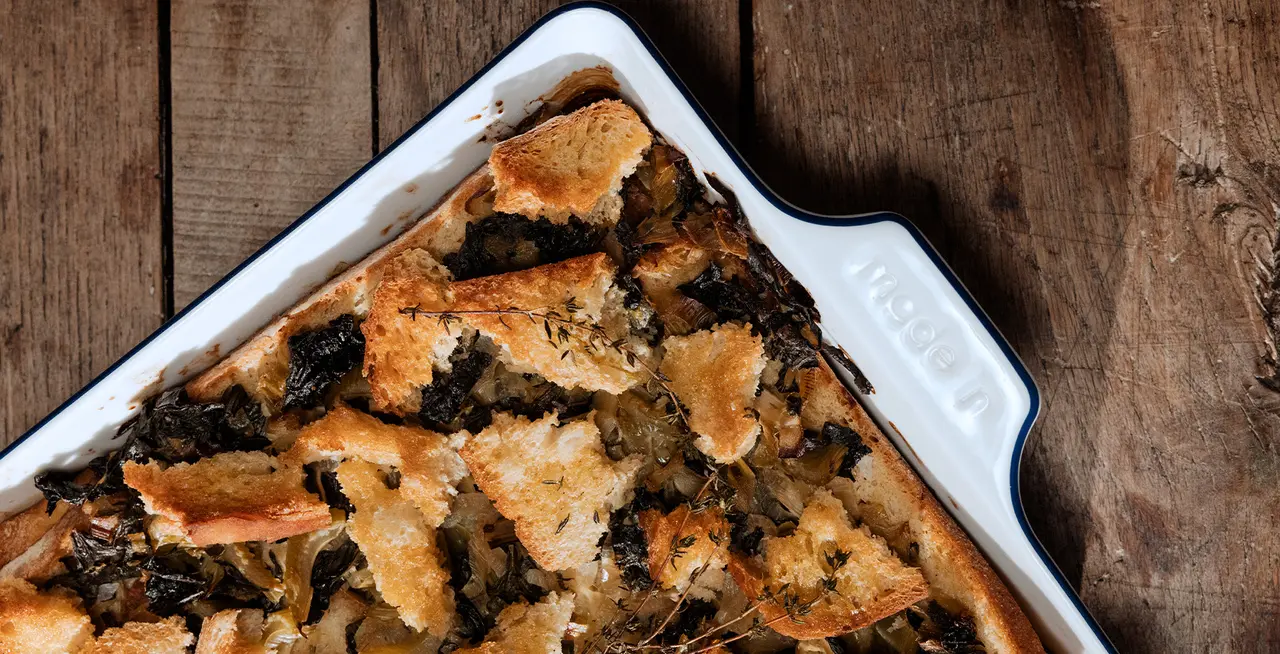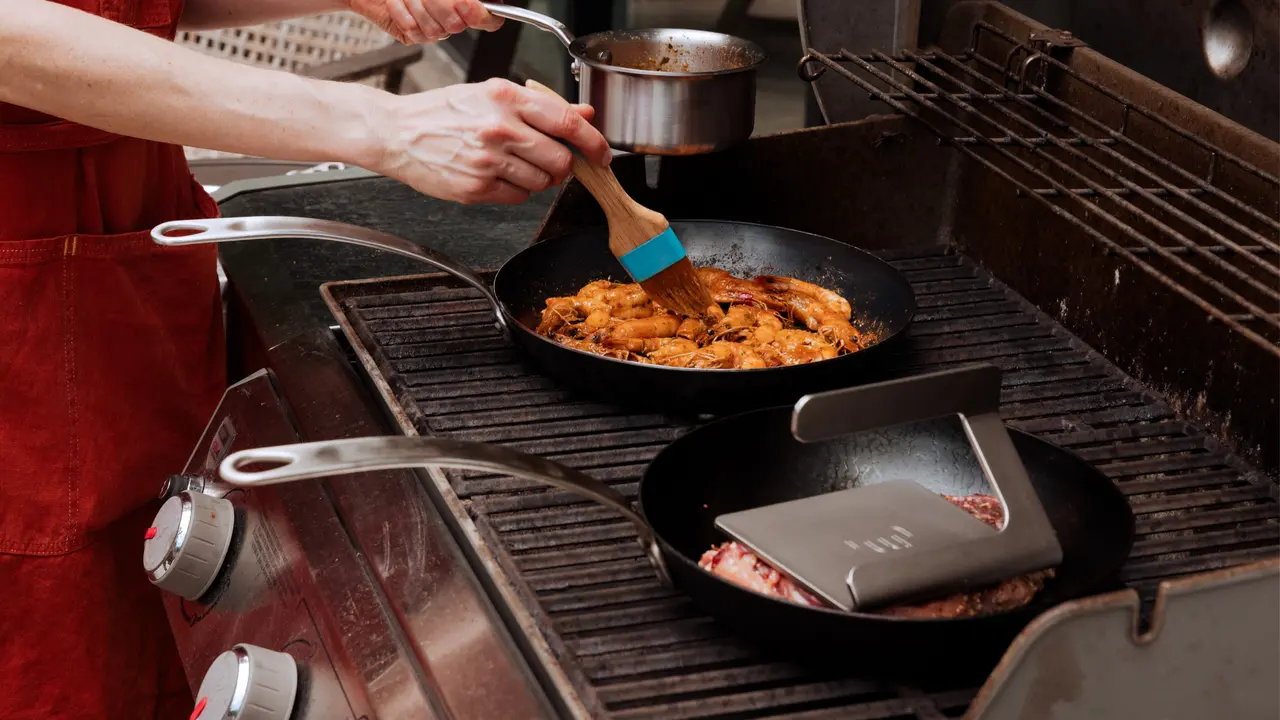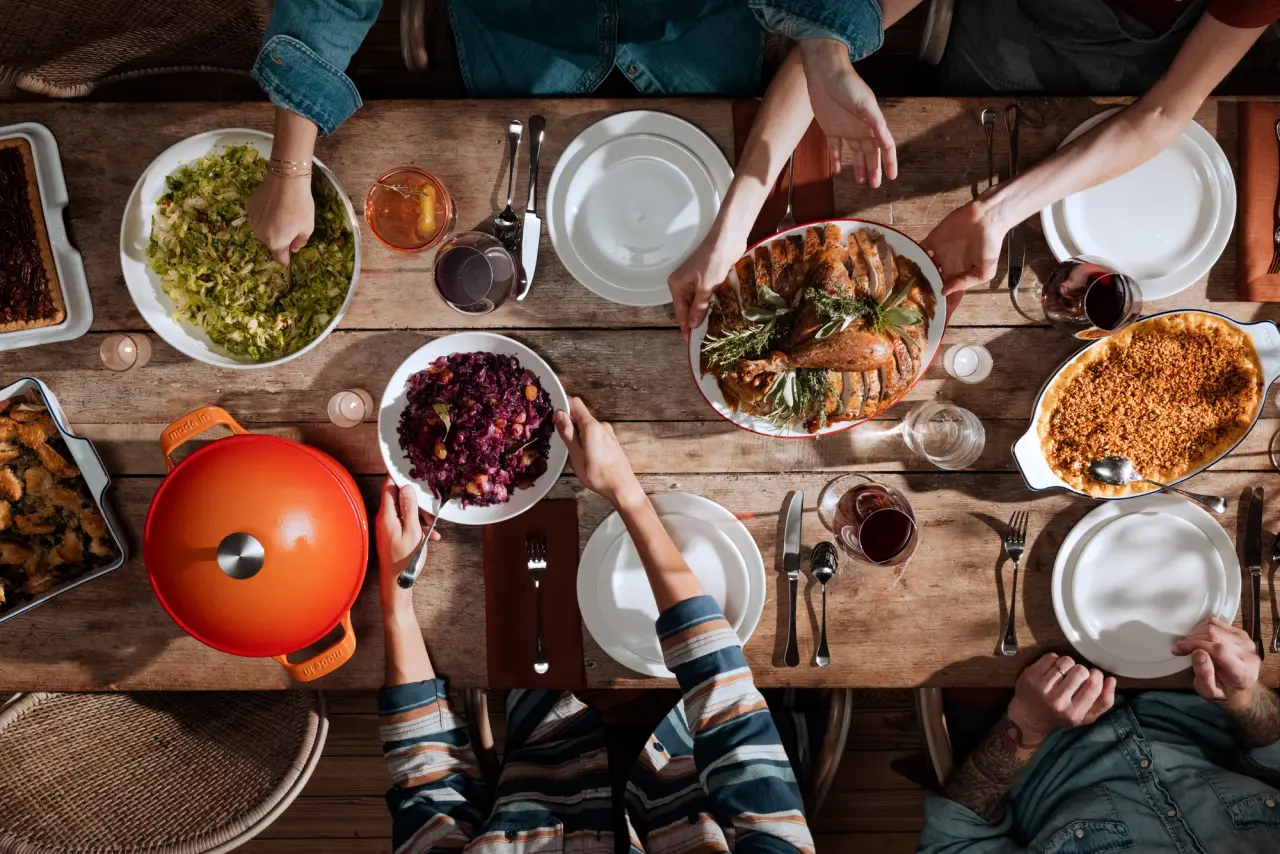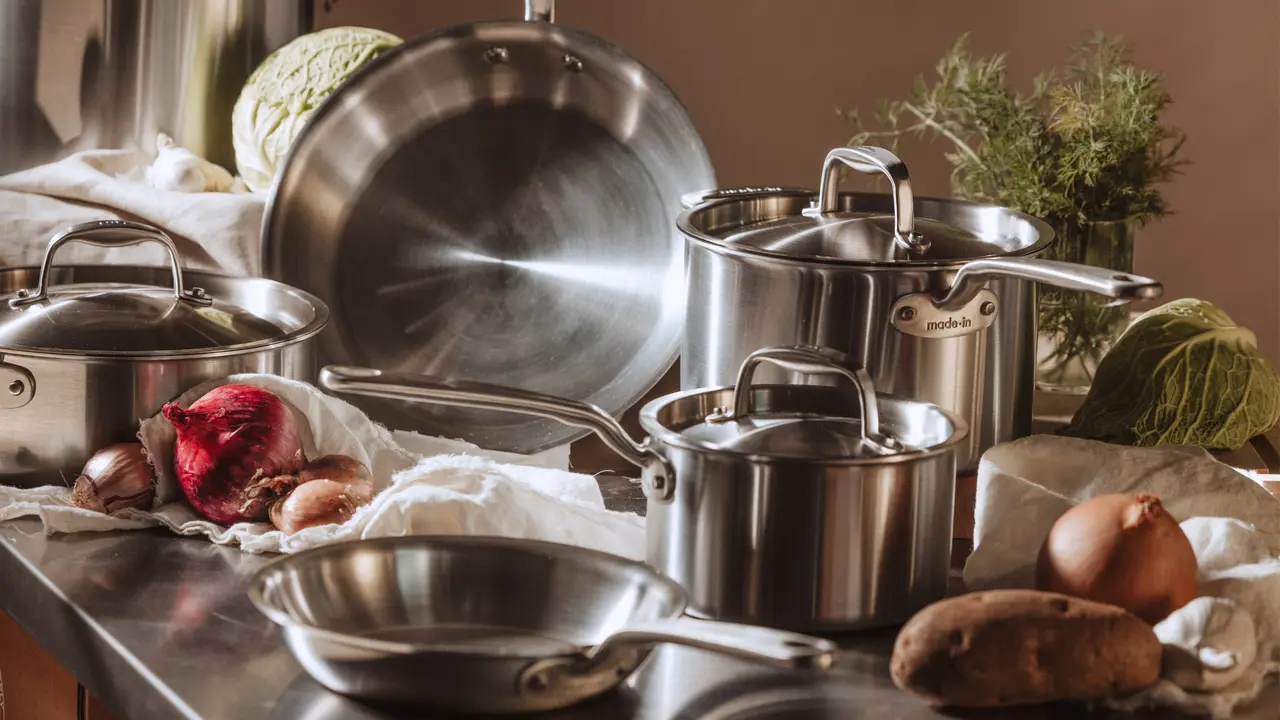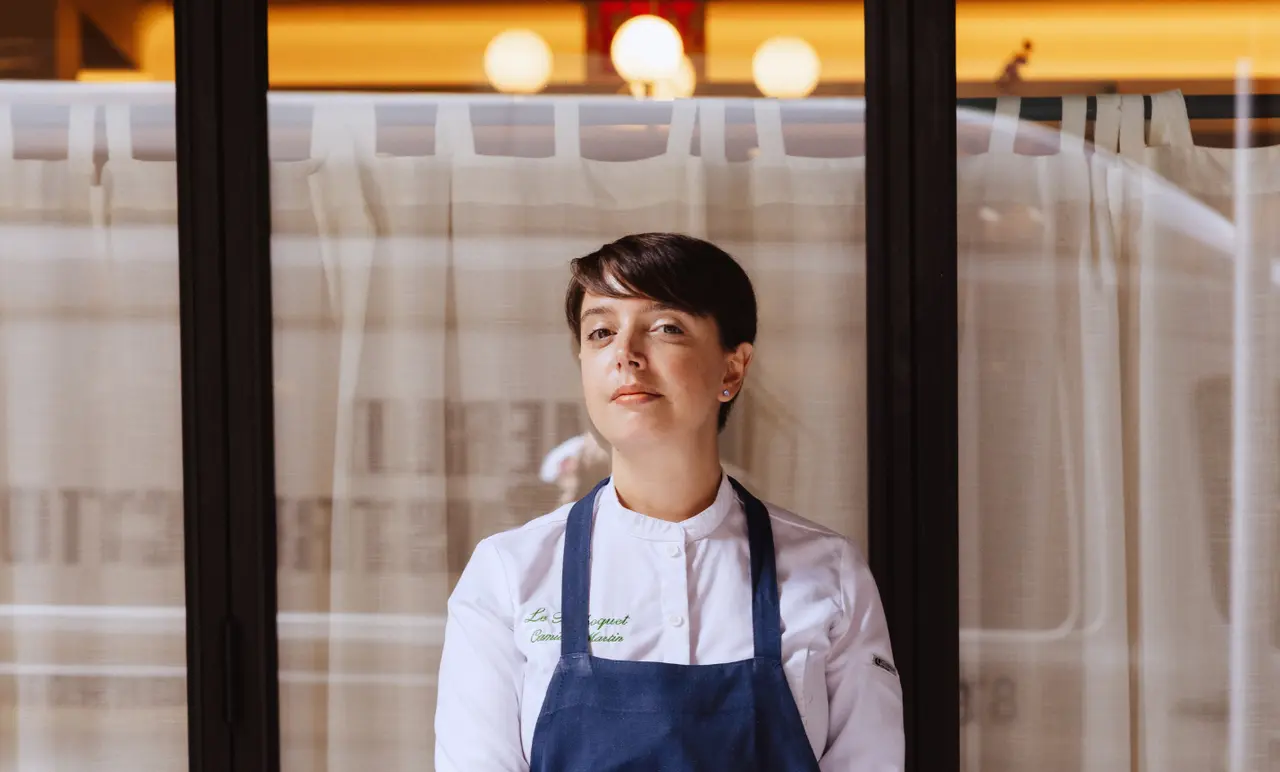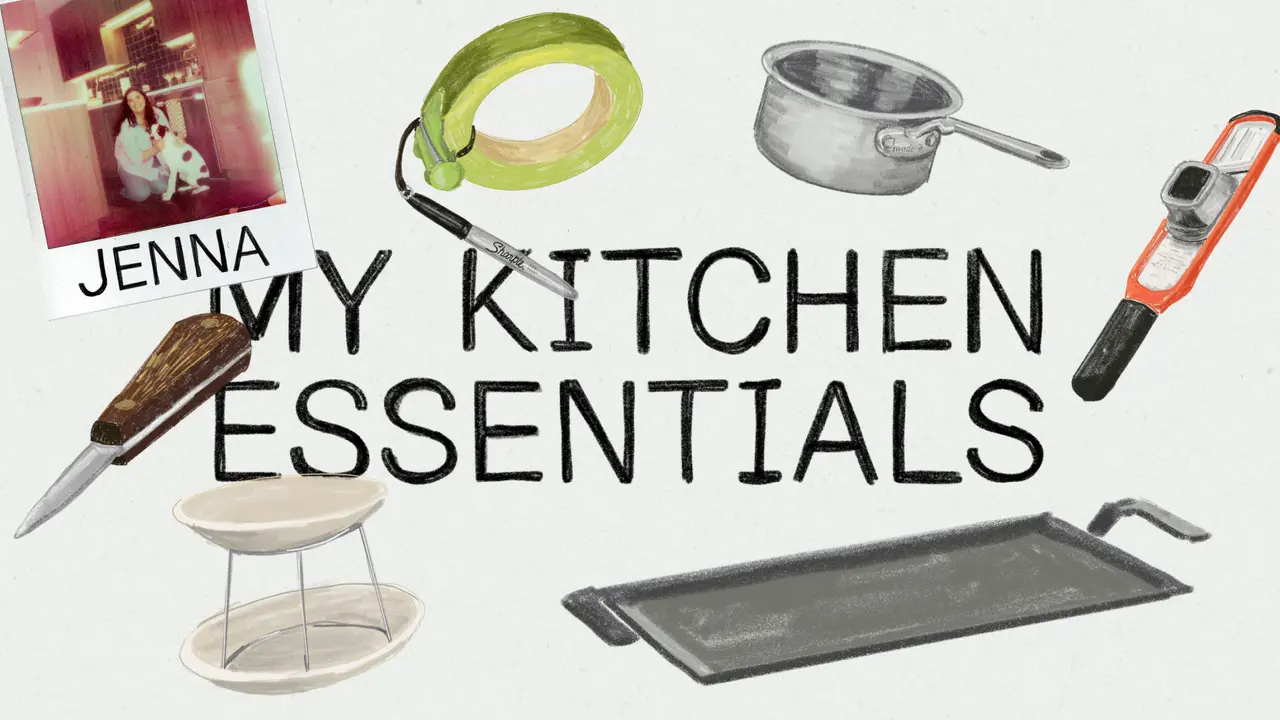Turkey may be the star of Thanksgiving, but we all know that the big meal is made in the side dishes– and more specifically, in the dressing. Or is it stuffing? Well, it depends.
Dressing and stuffing are titles that have been used interchangeably across holiday tables for decades, and it’s easy to see why: both consist of a mix of something starchy like bread, finely diced vegetables, and a plethora of warming spices like sage, rosemary, and pepper.
But there are some key differences in the preparation of each– namely, the vessel in which they are cooked. Read on to settle the dressing vs. stuffing debate once and for all.
What Is Stuffing?
A big hint about stuffing is in its name. Stuffing refers to a seasoned mixture that is stuffed into the cavity of the turkey to cook in unison with the bird.
Stuffing is a popular Thanksgiving side dish that can be modified to fit any taste, but usually features a dry or stale bread that is good for soaking up liquid. In southern states, it’s common to see hunks of cornbread fill this role, while in the Midwest you’re more likely to see a day-old baguette or other white bread as the stuffing base.
From there, the possibilities are endless. Seasonings are optional for stuffing, as the drippings from the turkey are meant to impart all the flavor necessary– but it’s always a safe bet to add salt and pepper to optimize all the other flavors. Finely diced celery, onion, carrots, and other aromatic vegetables get mixed in with the bread and seasoning before it is packed into the turkey cavity to cook. As it cooks, turkey drippings will soak into the dry bread, creating a perfectly moist, savory side dish ready to get drenched in homemade gravy.
What Is Dressing?
The dish many know as dressing is almost the same thing as stuffing, but it’s not stuffed into your Thanksgiving turkey. Dressing refers to a similar mixture of dried bread, seasonings, and veggies packed into a casserole dish. Traditional Thanksgiving flavors that pair well with turkey are often used– think sage, parsley, thyme, rosemary, salt, and pepper.
To ensure a nice, moist finished dressing, recipes typically call for an added liquid component like stock. As it cooks, the dressing will thicken as the bread soaks up the stock for a very similar result to Thanksgiving stuffing.
Is There a Difference Between Dressing vs. Stuffing?
While there are very few technical differences between dressing and stuffing, the big difference is the use of the turkey cavity or not. When cooking stuffing (aptly stuffed within the bird itself), it’s easier to impart a lot of flavor directly from the turkey drippings. However, it can increase cooking time for both the stuffing and the turkey, and it’s important to ensure that both components reach an internal temperature of 165F for safe consumption.
On the other hand, dressing risks becoming dry without those natural turkey drippings to sop up in the cooking process. This is easily remedied with added stock or cooking liquids, and many people hold back the turkey drippings to add to the dressing as it cooks in a casserole dish.
Other than that main difference, whether you call it stuffing or dressing really comes down to regional dialect.
Who Says “Dressing” or “Stuffing”?
If your Thanksgiving dinner table is comprised of diners from all corners of the country, it’s more likely you’ve been in a heated debate about the name of this staple side. If you call your fizzy drinks “soda” or “cola,” there is a good chance you call this Thanksgiving side “dressing.” That’s because regional dialects dictate that southern and southern-midwest states have a tendency to lean on the “dressing” side of the fence, whereas northern and coastal states like to call their dish stuffing– regardless of where it’s cooked.
There are also slight regional variations on ingredients. If you’re a Pacific Northwesterner, you might be adding oysters or other seafood to your stuffing, and if you’re in the deep south, cornbread might take the place of a challah, baguette, or white bread base in your dressing.
Call it what you will: there’s no denying stuffing and dressing are both can’t-miss Thanksgiving sides that add another level of comfort to your holiday table.
Ready to Cook?
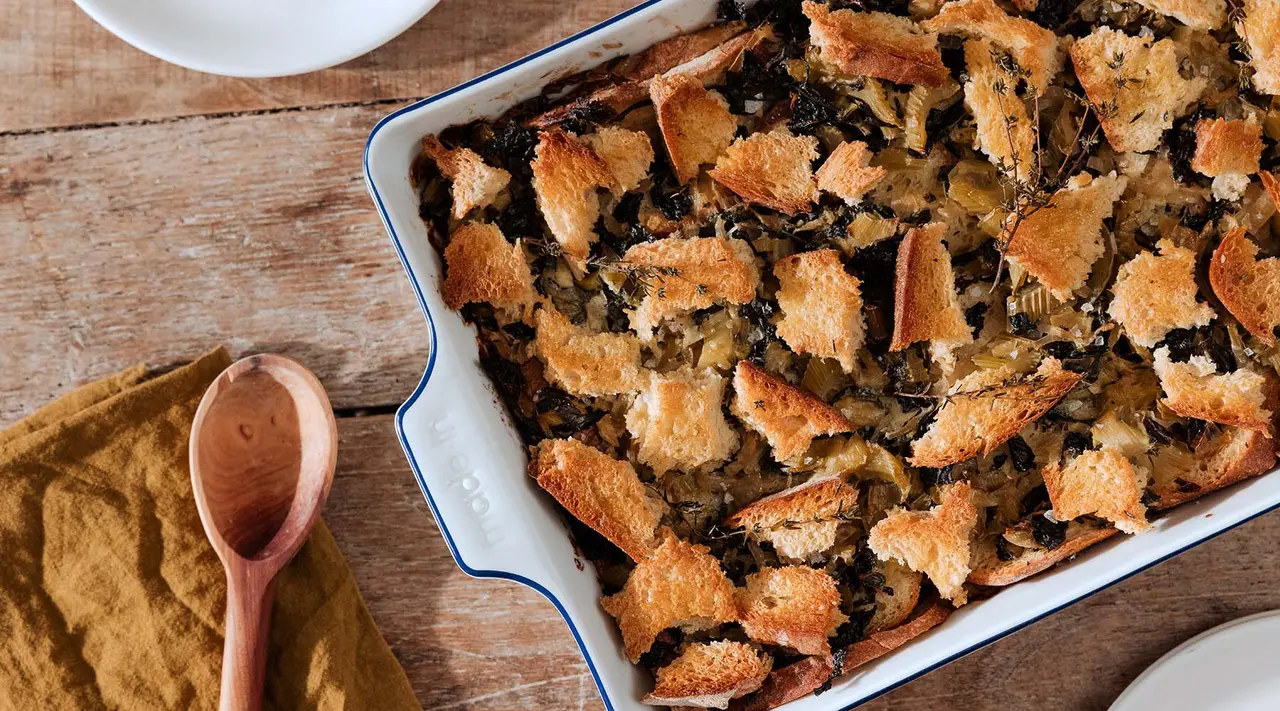
If you’re hosting Thanksgiving dinner this year, it’s time to begin your holiday prep, and we have just the recipe to get you started. Chef Nancy Silverton’s stuffing recipe– made with fresh bread, swiss chard, and kale—will unite your diners, if not in linguistic agreeance, at least in happy stomachs.
And don’t forget about what it’s cooked in—Baking Dishes for you dressing makers, or a one-of-a-kind Carbon Steel Roasting Pan to perfectly cook both your turkey and its stuffing.
